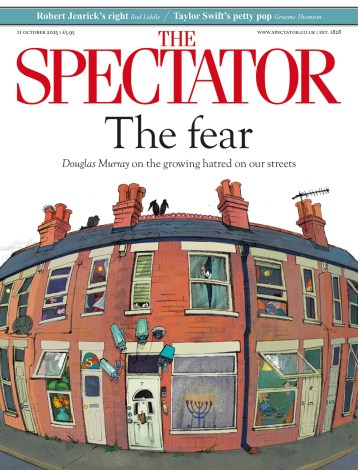My niece, Lara, 15, has a mind like a surgical blade. On any subject, from calculus to The X Factor, she finds the heart of the issue and dissects it with alarming ease. Lara makes mincemeat of homework, trailing A grades, which is why it was so odd to find her stumped two weeks ago. The trouble was with her English language GCSE. As part of her coursework (controlled assessment) she had to comment on a pamphlet, produced by a charity, about volunteering.
On the cover of the pamphlet was a slogan in a pink circle, and Lara’s dilemma was this. She said: I’ll get points if I write that the circle symbolises something, an unbroken ring of trust, or the fullness of life. But I mean, the truth is, someone at the charity just chose a circle at random, didn’t they? So what should I say? Then she looked me in the eye. And why, she said, are we studying pamphlets, not like, great novels or poems? I mean, what’s the point?
In the fortnight since I last saw Lara, her question has been worrying away at me. It’s had me casting about online, looking at teaching websites, sometimes chittering rat-like with rage. But I do now have the beginnings of an answer. That pamphlet is not an isolated phenomenon, I don’t think, but best thought of as a local outbreak of a national virus that’s been infecting the minds of teachers for over a decade. Chief among the virus’s symptoms is a strange passion for requiring children to both study and make pamphlets and posters.
State schools, private schools, council-run or independent, they’re all at it. I’m not for a minute suggesting that six-year-olds shouldn’t colour in, but these are 16-year-olds — and it’s their GCSEs. Teaching websites show no subject escapes the craze. History GCSE: ask pupils to design a poster for a film, ‘Churchill: hero or villain?’ Religious education: make a poster explaining Kosher food laws. Geography: students should design a pamphlet warning of the dangers of river pollution. English lit: imagine Of Mice and Men as a bromance flick — how might the poster look? That’s a suggestion of my own, but it’s quite in keeping with the rest. Last term, Lara had to imagine she was a baker in ancient Rome and design a flyer advertising bread. Did you learn anything from it? I asked. ‘No.’
The reasons most commonly given by teachers for their enthusiasm is that pamphlets and posters are ‘modern’ and ‘fun’. Studying flyers produced by charities makes English language ‘relevant’; designing posters helps engage a lazy teenager, they say, and God knows, no one envies them that job. But the more I think about it, the less fun I bet it actually is. I’ve been stretching my mind back two decades to div. 3 science, to my gang of bottom-feeders for whom C+ was a terrific coup. Even for us, real fun came not with a chance to draw a conical flask, but from those rare moments of ‘getting it’ that a good teacher helps invoke. For one term, as GCSEs loomed, the school’s best physics teacher was sent upriver from div. 1 to raise our game. I still remember the unaccustomed joy of joining one thought to another and making sense.
Posters aren’t fun, they’re just easy. The kids will keep quiet, which is nice for teacher, and designing a poster is the opposite of essay writing: no consecutive thought required, no coming to a conclusion, just choosing images online. If teachers find pupils prefer to analyse a charity pamphlet than a passage from Dickens, it’s not because it’s more socially relevant, but just because it’s simpler. The thicker kids, says Lara, are encouraged to forget the word part of the pamphlet and focus more on the presentation, which tells you all you need to know.
But I think there may be more to it than that. The real root of the problem, the origin of the virus, I suspect, lies in that pernicious sink-pit of a subject known as PSHE. This stands for personal, social, health and economic education, and as you’ll know, it’s been part of the National Curriculum for schools in the UK since 2000. The birth of compulsory PSHE coincides with the beginning of the poster fetish, which makes perfect sense for several reasons.
To start with, as far as I can gather, kids do nothing but make posters in PSHE. The idea is to imprint them with what’s right and wrong, to jam into their tiny minds the unbending commandments of our secular age: bullying bad, recycling good, volunteering good (but watch out for health and safety rules!). There’s no discussion required in PSHE because these things are unarguable, so week after week children churn out what looks like very amateur public health marketing material. Stop, think before you litter! Say no to junk food!
And if you look at the pamphlets and posters designed in other classes, with one eye still on PSHE, you begin to see that they share this same high-minded tone. In Geography, it’s all about the environment. In History, perhaps a protest sign over the discriminatory crusades. Lara’s English Language pamphlet is a perfect case in point. Though nominally a language exercise, the subterranean message is that it’s nice to volunteer, kids.
I can see a role for poster-designing at GCSE. It might be instructive, for instance, for teenagers studying the second world war to imagine that they’re Dr Goebbels, minister for propaganda, and design a poster explaining the need for ethnic cleansing. This would, perhaps, not play well on parents’ evening, but pupils would soon understand how dangerous propaganda can be, and how fragile the human psyche. They’d learn not to believe everything they read, which would be more useful than any amount of PSHE.
I spoke to Lara last night, to test my pamphlet theory and she answered with a spring in her voice. She’d had her favourite teacher that day, a Mrs B, and she spoke about her in that bright, happy voice teenagers use for the few adults they don’t think are morons. Mrs B, she said, had been reading the teaching guidelines for that day when she’d come across the suggestion to ‘design a poster’.
‘Oh, what rubbish! What a waste of time! Let’s not bother with that,’ said Mrs B.
Lara and her class were thrilled.







Comments